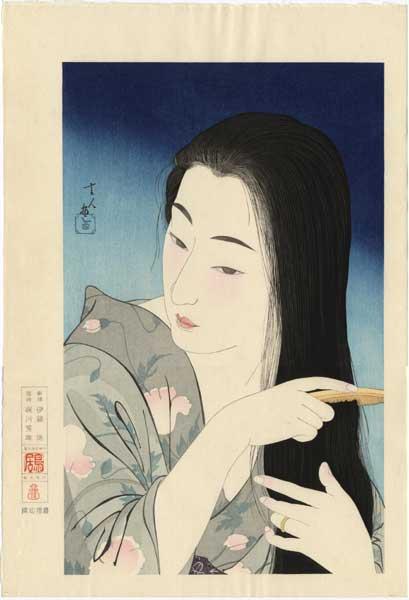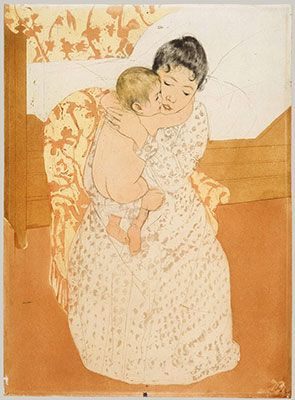The influence of Ukiyo-e prints on European Design and Objects:

Ukiyo-e prints!
What are ukiyo-e prints to begin with? Ukiyo-e prints are Japanese paintings or woodblocks that often depicted the Edo period of Japan from which spanned from the 1600s to the 1800s. Common themes and symbols that were exhibited were, nature, spirituality, mythology, love, and sex. The word “Ukiyo” is translated to “ pictures of the floating world”, this term is used from Buddhist philosophy. In a Japanese sense “floating” meant fleeting or transient, that all things are impermanent. The style is described to emphasize shapes, use dark outlines, flat areas of balanced color. It was different from European art because of its absence of dramatic lighting and harsh contrasts. This style of painting often used in Renaissance art is known as “Chiaroscuro”.

What makes Ukiyo-e prints so unique?

The unique characteristics of Ukiyo-e prints include the strong outlines, exaggerated foreshortening, and asymmetrical designs.
Japanese Design that broke barriers for European artists:
Ukiyo-e prints were introduced to the western world, at the end of the Edo period, which was a time when Japan was isolated and closed off to the rest of the world. When dutch traders discovered these prints it brought exposure to Europe. Ukiyo-e became a fascination with Europe and influenced many artists during that time. This massive appeal from the western world coined the term “Japonisme” which refers to the influence of Japanese art on European art and design. “Japonisme” was especially prevalent during the impressionism, and post-impressionism period, it inspired new methods of painting and printmaking. European art was shifting and Impressionism was taking over. The concepts of open compositions and ordinary subject matters and scenes of everyday life were impacted western art. Artists such as Edouard Manet and Marry Cassat admired and emulated the style of Japanese art.

Maternal Caress
Artist: Mary Cassat
“Japonisme” left an imprint on Mary Cassat’s art. She created dozens of simplistic paintings that reflected everyday life. She borrowed some of the methods by using flat colors, broad lines, and cropping. What I noticed from this style is that it feels more intimate personal and relaxing.

Edouard Manet grew an affinity for ukiyo-e prints. In his portrait of Emile Zola it is evident he was a great admirer of Japanese art.
On the left of this painting depicts a landscape screenprint with a bird perched on a branch. On the right side depicts what looks like a Japanese shogun. In this painting, elements of ‘flattening’ and ‘simplifying’ shapes demonstrate the styles used in Ukiyo-e prints.

Objects (as prounounced in Japanese, オブジェクトObujekuto”!) that were influenced by Ukiyo-e prints:
After ending a long period of seclusion, Japan began reopening its import and export trades. This included Japanese artifacts, paintings, and printing techniques. Ukiyo-e prints were the most popular amongst them all. It was intriguing for Europeans to see something so foreign. This exposure resulted in so much popularity with the Japanese culture, objects like furniture were being manufactured for people’s homes. Japanese art and artifacts began to make an appearance in the antique shops of Paris and London.
Here is an example of how Japanese culture and Ukiyo-e prints inspired this French Cabinet.


In 1867, Japan featured its first formal exhibition for arts and crafts at The Exposition Universelle. The exhibition triggered a wide audience interested in the culture of “Japonisme”. This marked the beginning of all things Japanese becoming fashionable and respected. This definitely inspired European artists to use Japanese elements and symbolism for a more stylistic approach.
The French Exposition Universelle of 1867

And so it turns out the world was already obsessed with Japanese culture for a longgg time. Basically, the term ‘Japonisme’ is a formal and old-fashioned way to describe a non-japanese person who has an affinity for Japanese culture. Which is equivalent to the modern word we use in pop-culture today known as a “weeb”. I just found that amusing and engaging as an approach to writing this blog post.
And that’s all for Survey 4 blogpost!
Image sources:
https://www.theartstory.org/definition/chiaroscuro-tenebrism-sfumato/artworks/
https://www.pinterest.ca/pin/488781365787426194/?nic_v2=1a6bW2lTu
Sources:
https://www.theartstory.org/movement/ukiyo-e-japanese-woodblock-prints/